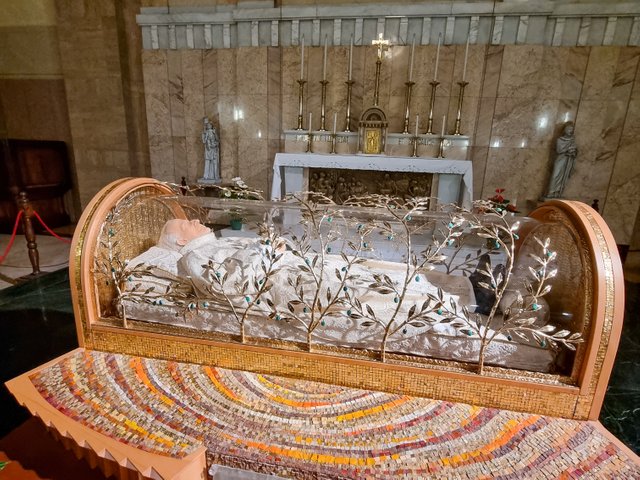The Basilica of Saint Mary Queen of the Apostles alla Montagnola serves as a remarkable blend of early Christian architectural inspiration and the modern Church’s commitment to evangelization. Erected between 1931 and 1933 in Rome’s Ostiense district, this sacred site was a project of the Society of St. Paul, founded by Blessed Giacomo Alberione. A pioneering priest of the early 20th century, Alberione aimed to use contemporary communication tools to proclaim the Gospel. The basilica stands as a powerful symbol of his forward-thinking vision and missionary dedication.

The basilica’s design, entrusted to the architect Leone Favini, draws heavily from the simplicity and symmetry of early Christian basilicas. Its layout and architectural elements evoke the traditions of the Church's earliest centuries, creating a bridge between the past and the present. The facade, though austere, exudes a quiet dignity, inviting worshippers and visitors alike to step into a space of contemplation and reverence.

Dedicated to Mary, Queen of the Apostles, the basilica emphasizes the Marian devotion central to Catholic spirituality. The title "Queen of the Apostles" reflects Mary’s role as the spiritual mother of Christ’s disciples and her enduring presence in the mission of the Church. Inside, the basilica features artwork and iconography that honor her, alongside depictions of the apostles who first carried the Christian message to the world.


Consecrated in 1933, the basilica quickly became a vibrant parish center. It serves not only as a place of worship but also as a hub for the Pauline Fathers’ apostolic work. This includes publishing, media outreach, and other modern evangelization efforts inspired by Alberione’s vision.


Today, the Basilica of Saint Mary Queen of the Apostles alla Montagnola remains an active parish church and a minor basilica, blending historical roots with a forward-looking mission. It stands as a quiet yet powerful reminder of the Church's adaptability and its enduring commitment to spreading the Gospel through every age.

The body of Blessed Giacomo Alberione is enshrined in the Basilica, as this church is deeply connected to his mission and legacy. It serves as the spiritual heart of the Pauline Family, a religious congregation he founded.

Commissioned by Fr. Alberione, the basilica was intended to serve as the center for the Pauline Family. Its modern design and dedication to Mary reflect his innovative spirit and deep faith.
His burial there is both a spiritual and symbolic gesture, affirming his lifelong work of integrating faith with modernity while honoring the Marian devotion that shaped his mission.
How to visit
You begin your trip by heading to the southern part of Rome, in the Ostiense district. The basilica is located at Via Alessandro Severo, 58, a quieter area compared to the bustling city center. To reach it, take Metro Line B and alight at the Basilica San Paolo station. From there, a short walk through a residential neighborhood leads you to this serene site.

If you prefer a bus ride, several routes, including Bus 716 from Piazza Venezia, can bring you close to the basilica. Just disembark at a nearby stop and enjoy a brief stroll to the church.
The basilica is open daily, and visitors are welcome to attend services or simply admire the architecture and artwork. Morning hours are ideal for a peaceful visit, and Sundays offer the opportunity to participate in Mass with the local community. It’s always a good idea to check the church’s schedule beforehand, as it may vary during holidays or special events.
Once there, take your time to explore its tranquil interior and soak in the connection between modernity and early Christian inspiration.
Thank you for using Steem Atlas.
Downvoting a post can decrease pending rewards and make it less visible. Common reasons:
Submit